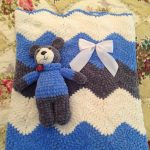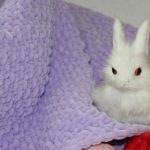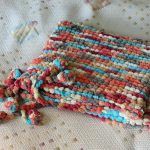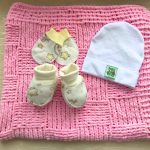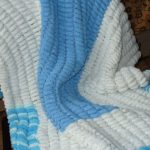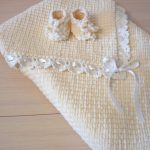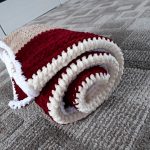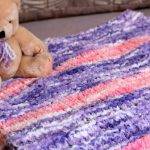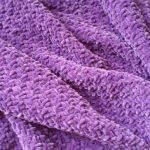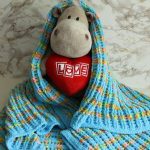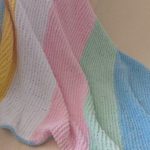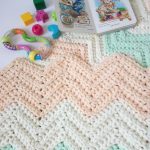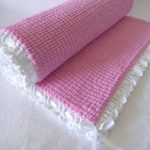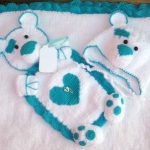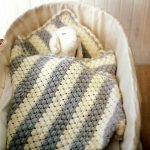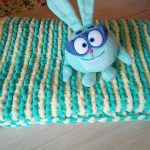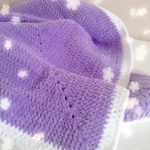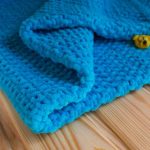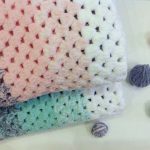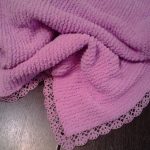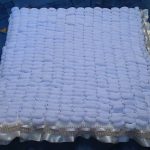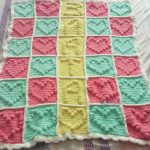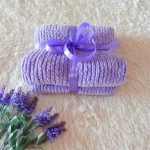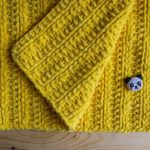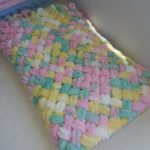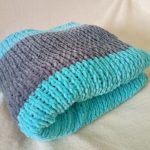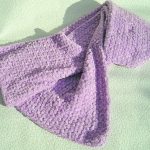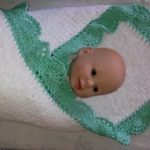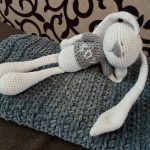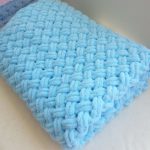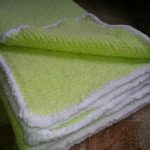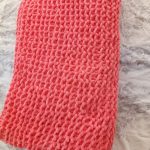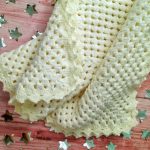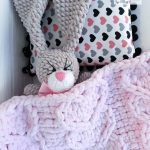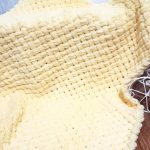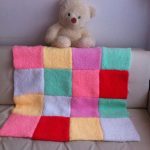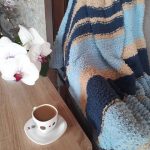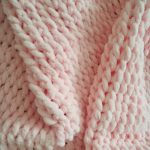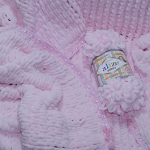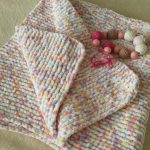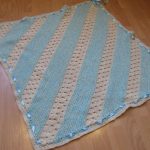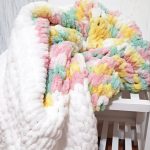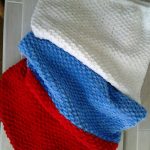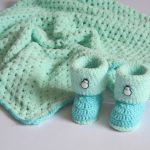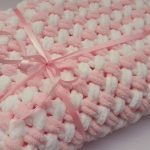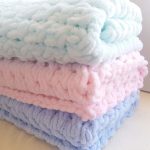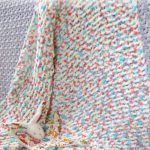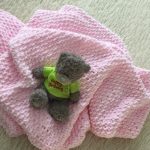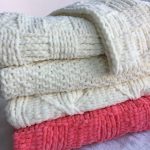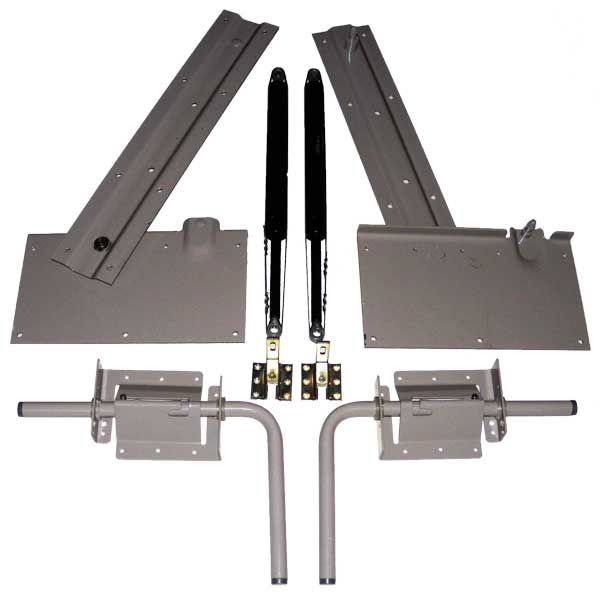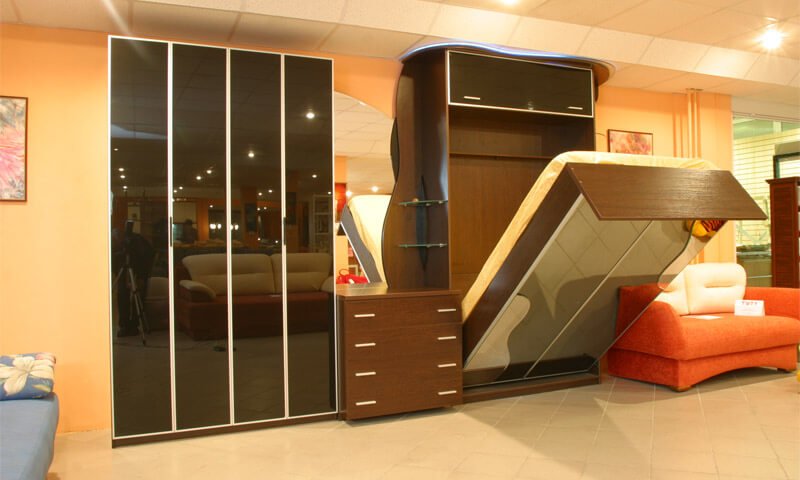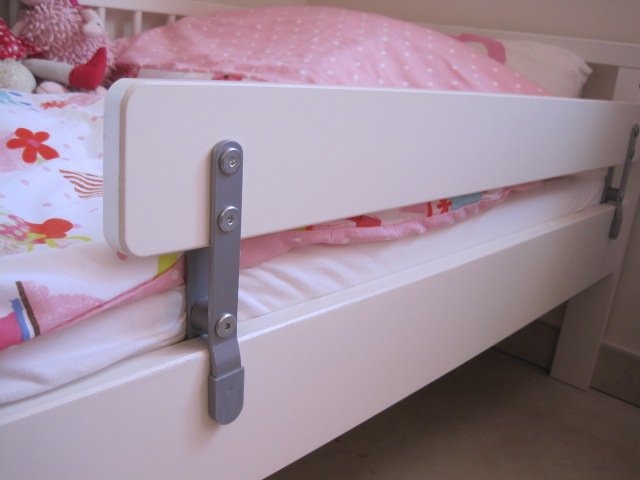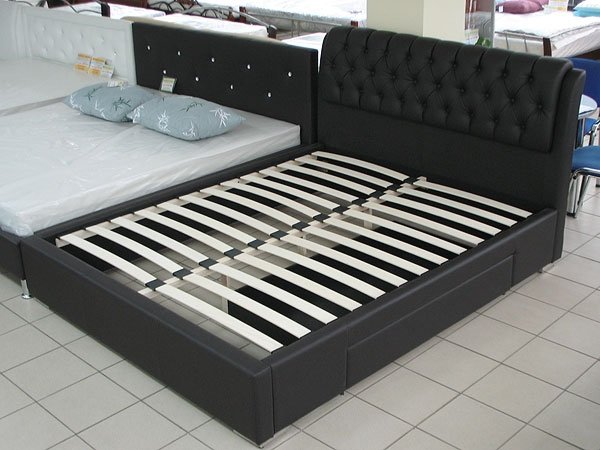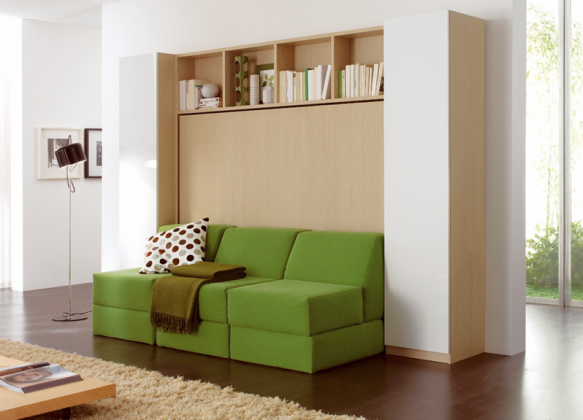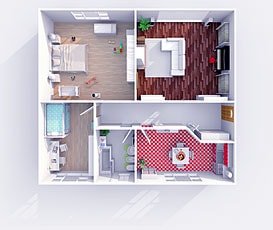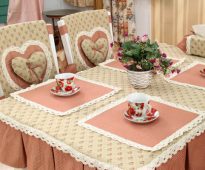 Which is better to choose fabric for tablecloths
Which is better to choose fabric for tablecloths
Plush yarn blanket
For the kid of any age the plaid is one of the most necessary things. But children's things sometimes are quite expensive and at the same time look completely unpretentious. No need to get upset - you can knit a warm plush blanket yourself!
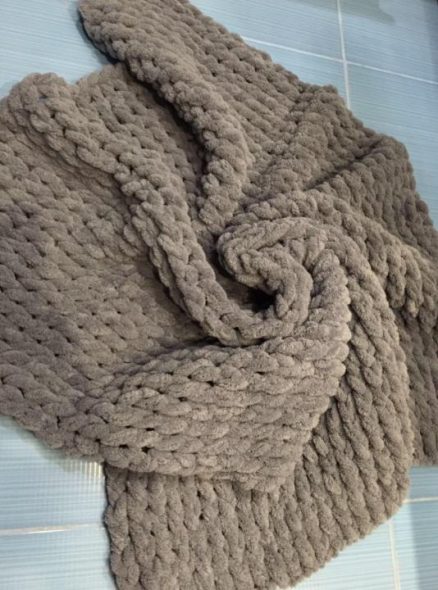
Brown plush plaid with a pattern “Braids” for a baby
Today, the yarn market offers many options for the most avid knitters, but less sophisticated needlewomen risk losing this variety.
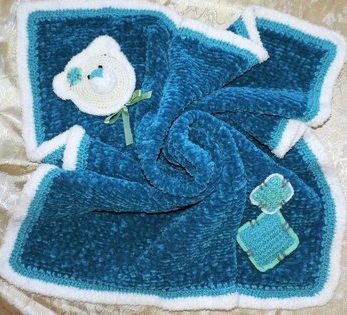
Handmade soft plush plaid with bear decor
If you decide to tie something from plush for the first time, then you should take a closer look at the following types of threads in the middle price category.
- The HAPPY series of the manufacturer YARNART (Turkey) has a familiar texture: a pleasant, like a plush toy or a soft terry bathrobe. It consists of fine villi evenly distributed along the thread. For her fit thread and hook number number 6-7. Each hank 175 meters.
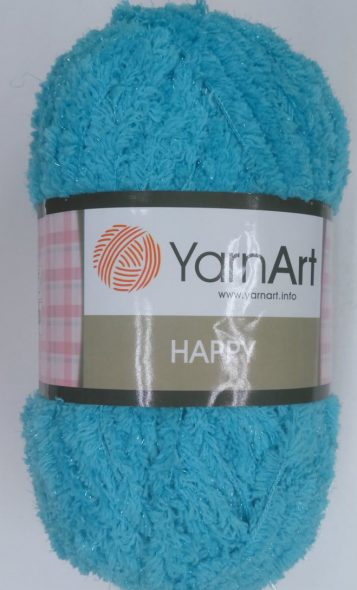
YarnArt Happy - soft, pleasant to the touch, fancy yarn with shimmering shine
- DOLCE (YARNART, Turkey). Thick thick plush yarn suitable for both the smallest and for school-age children. Depending on the desired density, you can use the hook and knitting needles №№ 4,5-6,5. In a hank 120 meters.
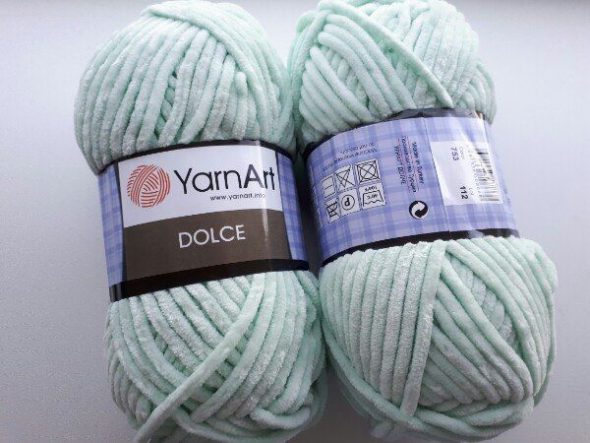
Dolce knitting plush yarns are amazingly soft and pleasant to the touch.
- A special model for children from HIMALAYA (Turkey) DOLPHIN BABY is the softest thin plush of delicate pastel colors. The recommended size of the needles and hook №№4,5. In a hank 120 meters.
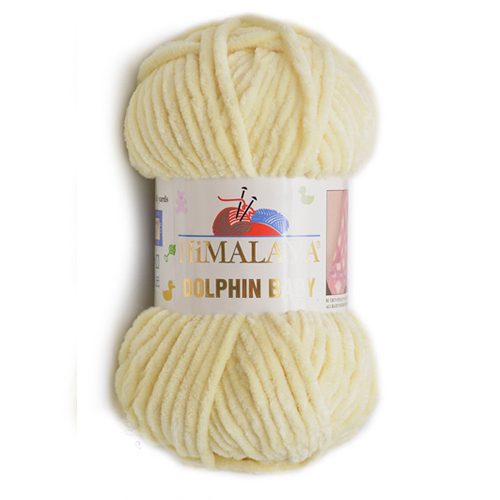
Himalaya Dolphin Baby plush yarn is pleasant, soft and not prickly
Content
Pattern selection
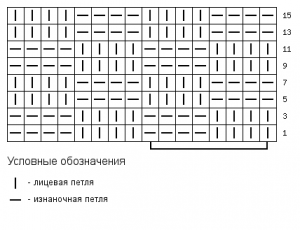
The classic “Chess 4x4” pattern will be clearly visible on plush yarn.
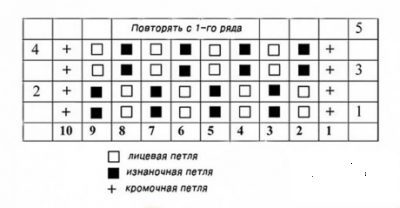
The “Rice” pattern - a very simple pattern, obtained by alternating facial and purl loops, is also perfect for plush
Knitting even a small rug is a rather laborious exercise, so it’s best to choose a simple pattern. Traditionally for children's things it is customary to choose sectional patterns.
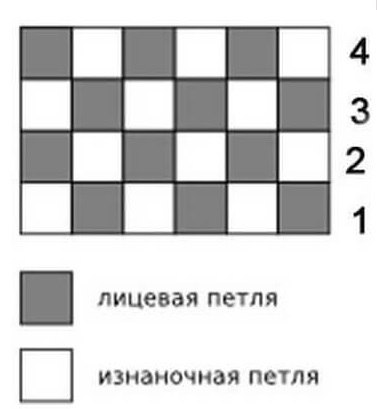
The pattern "Grain" refers to the sectional and easily fit in the scheme
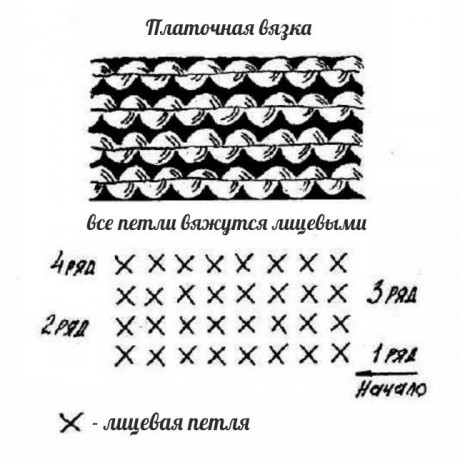
The scheme of knitting a rug for a newborn “Shawl bandage”
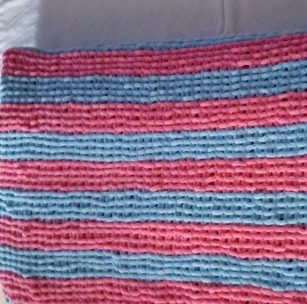
Striped Plaid Knitted
For example, waffle. To knit a baby’s plush knitting pattern with this pattern, you will need about 720 meters of yarn (about 6 skeins).
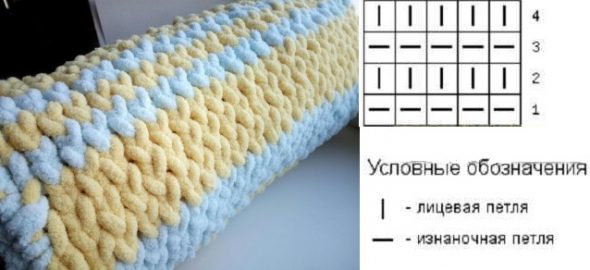
The simplest plush knitting needles
Wafer Pattern
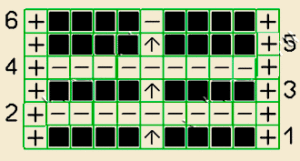
A simple waffle pattern is good for knitting children's things, as the canvas is soft due to the uniform thickness.
We collect the number of loops, a multiple of 10. Next, follow the scheme.
1 row. We remove the first loop, * 4 face, 1 purl knit with thread left from the outside of the work - that is, the purl "vice versa" *
The pattern in * ... * we perform to the end of the row and end with the edge of the purl.
2 row. We remove the edge loop, we knit the whole row with the purl.
3 row. We knit the same way as row 1.
4 row. Repeat 2 row.
5 row. Repeat 1 row.
6 row. Remove the edge, * 4 face, 1 purl *, edge loop.
We repeat these 6 rows to the length we need.
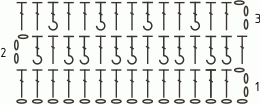
Crochet waffle pattern for a cozy and lightweight rug
Consider the fact that plush yarn is very delicate: if the knitting is too dense, it can be deformed during use.
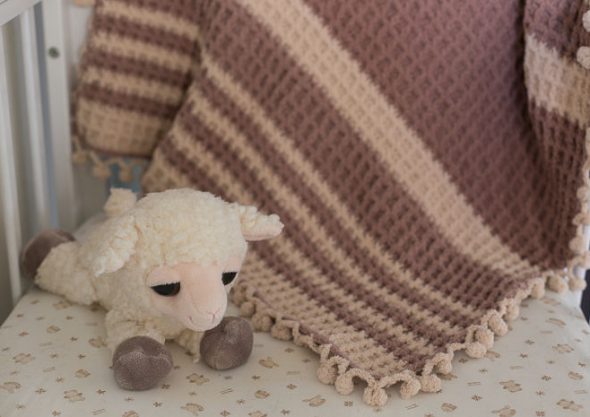
Children's knitted plush plaid "Waffle"
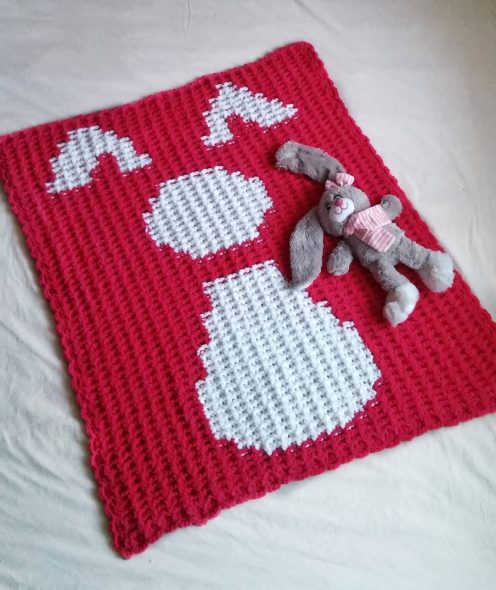
Unusual teddy plaid with a bunny, made with waffle pattern
In order to check how the plush yarn will behave in the finished product, tie a small sample of 15x15 cm. This will help to determine the size of the needles and the tension of the thread during knitting.
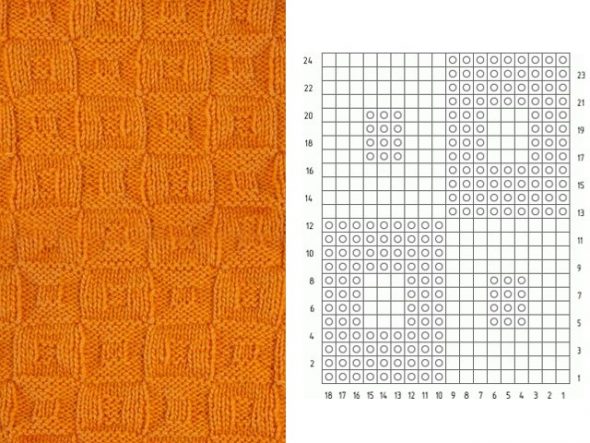
Two-sided “cage” pattern of face and back loops with embossed texture
How to tie a crochet baby blanket?
The original, simple and quick pattern for crochet - nipples. Plush yarn is the best fit here. The thing connected from it will become not only an indispensable assistant for a walk, but also complement the interior of the children's room with a bright accent.
Pattern of pattern "bumps"
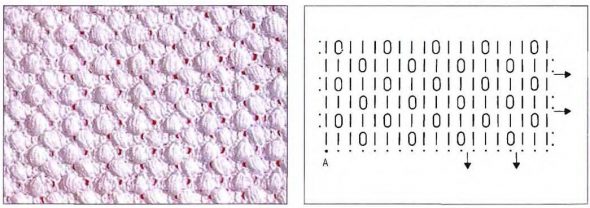
Pattern of the pattern and the example of the canvas with a pattern “Cones”
Knit a chain of air loops of the desired length. If you want a rectangular blanket, it is better to choose a long side: this is how the pattern looks more spectacular. We skip 5 air loops and start the hook in the 6th. Grab the working thread, stretch it through the loop and leave it on the hook. The result was an incomplete single crochet.
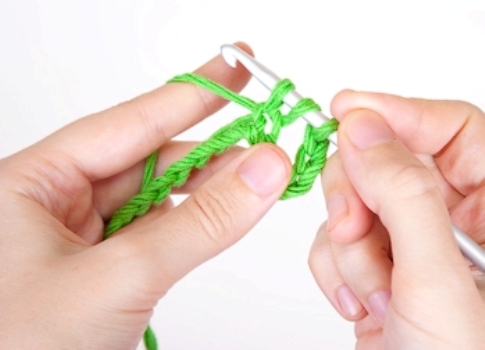
With a hook, grab the thread in the sixth loop from it and print a new one.
We again hook in the same loop and knit. You should now have three loops on your hook. To form a cone, we catch the working thread and pass it through all the loops.
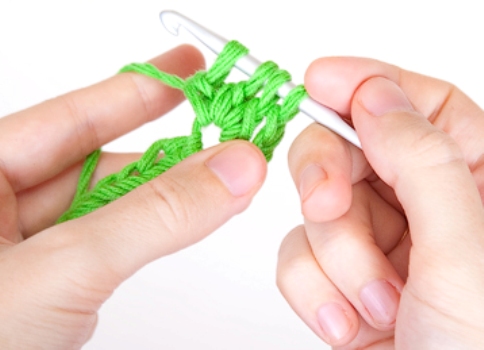
Make three double crochet stitches
In one loop, you can make as many incomplete crochets as you need. The optimal number of 3-5 columns.
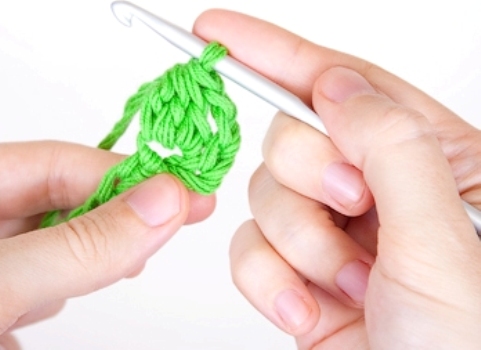
We connect the available three columns of loops and knit simultaneously
After we have tied the first knob, we make a connecting air loop, retreat from our knob 2-3 loops, and in the 3rd we form a knob again. If you want the bumps to be placed one above the other, then in the next row, place it on the same loop with which the columns were tightened.
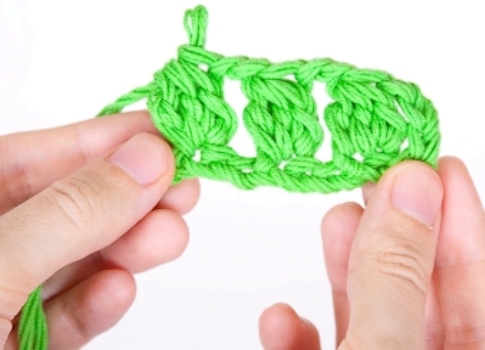
To make the same element alongside, we make 2 air loops, make another one or two “bumps”
In order to arrange the pattern in a checkerboard pattern, the cone of the next row must be knitted on a connecting air loop. Cones will be more voluminous if knitted from incomplete crochets with nakida.
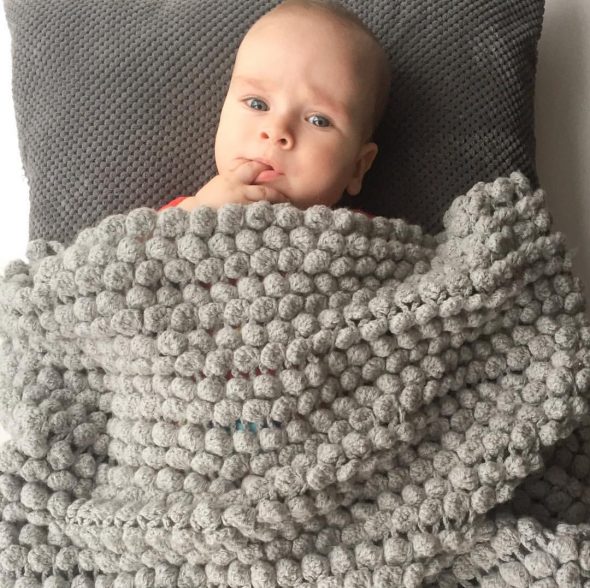
Soft textured nubs will really like the little owner
To do this, knit not only the first loop, but also nakid, and leave the loop on the hook. Plush yarn trim will give the product a finished look.
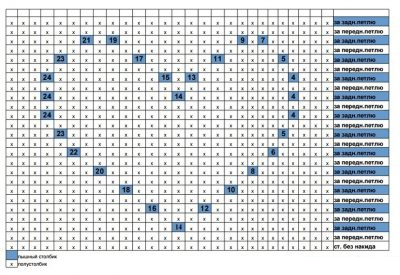
An example of using “bumps” on the main canvas to create a pattern
Whatever pattern you choose, a knitted plaid made of plush yarn will warm your child and bring an atmosphere of comfort and care to your home.
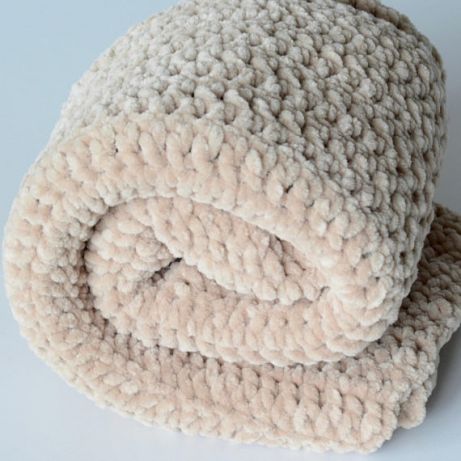
Plaid children's summer of light plush yarn
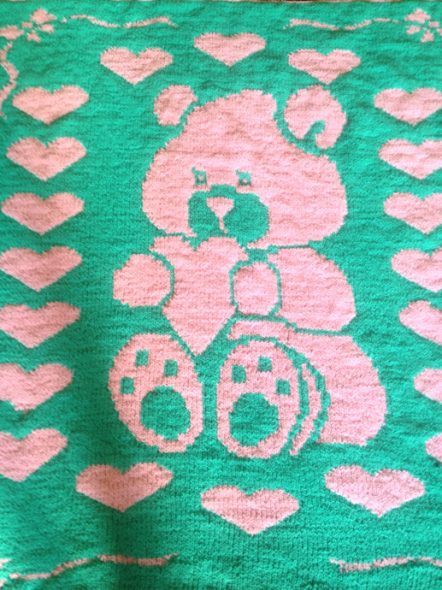
Children's plaid Bear with hearts from plush yarn
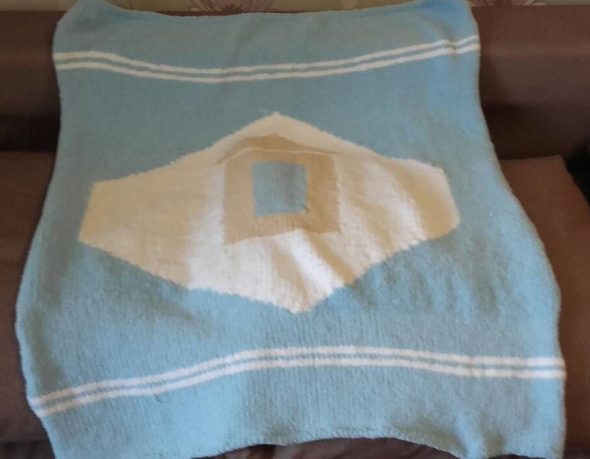
Plaid of plush yarn for a newborn with a house in the middle
Video: Pattern "Pletenka" knitting needles for rug
50 beautiful and original children's rugs from plush do-it-yourself:
 Which is better to choose fabric for tablecloths
Which is better to choose fabric for tablecloths
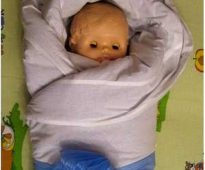 How to wrap a baby in a blanket?
How to wrap a baby in a blanket?
